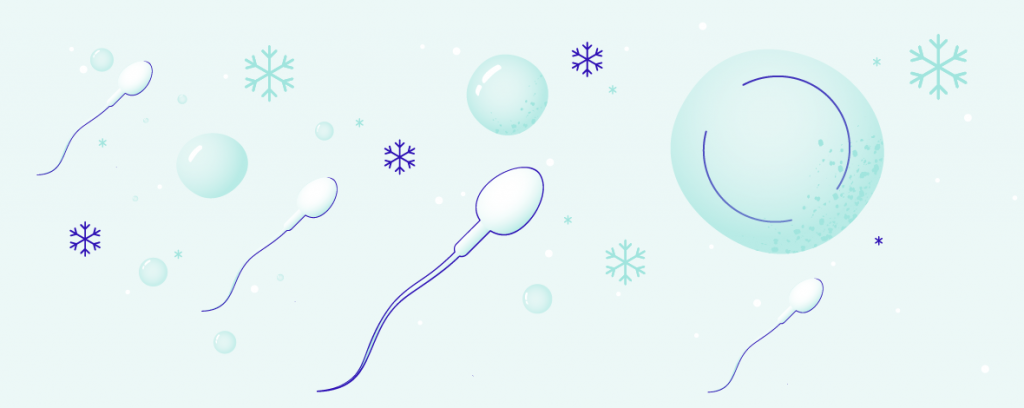Používáte nepodporovaný, zastaralý internetový prohlížeč. Stránky v něm nemusí být správně zobrazeny, mohou být pomalé a nemusí správně fungovat. Zaktualizujte si prohlížeč nebo si nainstalujte nový. Doporučujeme použití některého z následujících prohlížečů: Google Chrome, Edge, Mozilla Firefox


Vitrification: a quick way to freeze embryos
For many infertile couples, we will be able to culture more high-quality embryos than will be needed in the given cycle. We recommend freezing those embryos that are not used right away. Reproductive cells or embryos can be stored this way for many years.
Book a consultationAn integral part of treatment
With an increasing emphasis on reducing the number of embryos for embryo transfer, vitrification is becoming an integral part of treatment, giving our patients a greater chance of success from a single stimulation. During subsequent cryo-embryo transfer, the risk of ovarian hyperstimulation and the need for general anaesthesia are eliminated. Costs for further procedures are also reduced.

When is vitrification suitable?
-
If the first IVF cycle is not successful, you will quickly have embryos at hand for another attempt
-
If you are planning another child in a few years and don’t want to undergo the process of egg retrieval again.
-
If you are planning another child, but one of the partners is scheduled for chemotherapy or radiotherapy and there’s a risk of becoming infertile.
Vitrification is a modern, safe method of freezing
We use vitrification at our clinic, which is a more modern method of cryopreservation. We use the closed Rapid-i system in which the embryo is not in direct contact with liquid nitrogen.
How does vitrification work?
The embryo is placed in a protective substance called a cryoprotectant
We rapidly cool the drop of cryoprotectant with the embryo to the temperature of liquid nitrogen, –196 degrees Celsius
No ice crystals will form in the protective substance or in the embryo
We store the embryo in a sealed container in liquid nitrogen
Before using the embryo, we quickly warm it to body temperature and wash away the protective substance
Transfer to the uterus can take place in a few hours
Experience of foreign experts
The first child in the world from a frozen embryo was born in Australia in 1984; the first Czech child from a frozen embryo was born in 1993. Back then, a slower cryopreservation technique was still being used.
However, when using vitrification, there is a much greater chance of the frozen embryo implanting optimally. The closed system of vitrification supports the embryo’s developmental competence and does not damage embryonic cells. A study evaluating embryos after 1 and 6 years of being frozen, confirmed that neither the duration of embryo survival nor the rate of pregnancy decreased.
The suitability of using a closed vitrification system for freezing eggs, their fertilisation and embryo development in clinical practice has also been demonstrated.
Contributions at specialised conferences, such as the meeting of the Japanese Society for Reproductive Medicine in 2011, confirmed that vitrification using the Rapid-i system is very successful.
Up to 95% of embryos can be used after thawing.
Book a consultation and we’ll see how we can help
Other laboratory methods
ICSI
ICSI is the injection of sperm directly into an egg. This significantly increases the chance of fertilisation.
More informationEmbryoScope
We can increase the chances of pregnancy by selecting only the best quality embryos for transfer. We can identify these through continuous monitoring in EmbryoScope.
More informationPESA/MESA/TESE
In the absence of live sperm in the ejaculate, there is the possibility of obtaining sperm surgically from the epididymis (PESA or MESA) or testis (TESE).
More informationEmbryoGen / BlastGen
EmbryoGen and BlastGen are sequential culture media meticulously engineered to closely emulate the natural developmental progression of embryos.
More informationAssisted hatching
This method is used to disrupt the protective envelope (outer shell) of the embryo in order to make it easier to implant (nest) in the uterus.
More informationMethods of infertility treatment
IVF with egg donation
If a woman cannot conceive and her partner's sperm are healthy, we use donor eggs fertilised with the partner's sperm.
More informationIVF using donor embryos
Donated eggs and donated sperm are used for in vitro fertilisation.
More informationIVF using donor sperm
For couples who cannot conceive naturally and the woman's eggs are healthy, we can use donor sperm from a suitable anonymous donor to fertilise the eggs.
More informationIVF using own eggs
We recommend IVF if the couple cannot conceive naturally.
More information





